An Amazon listing is no piece of cake – sellers must contend with complex options and increased costs. So how are small fmcg brands making it work?
A listing on Amazon is, in theory, a dream come true. Overnight, it gives small suppliers access to millions of eyeballs. Almost 90% of UK shoppers use Amazon, found a Mintel survey in 2019, and a quarter are signed up to Prime.
It’s a reach suppliers could not hope to get elsewhere. That appeal has only intensified during the pandemic, as online sales have gone through the roof and getting shelf space at the major mults has become an ever more difficult task amid delistings.
It’s not as simple as just setting up shop and waiting for the sales to roll in, though. Amazon has a whopping 280,000 sellers on its UK marketplace and has welcomed more than 7,000 new ones since the start of the year. So getting your food and drink product to stand out is no mean feat.
Plus, Amazon offers a number of different arrangements – all of which come at a different cost. Suppliers have to weigh up whether to invest in Prime delivery, fulfil orders themselves, or pay Amazon to do the legwork on the last mile.
Guide for SMEs: how to start selling on Amazon
So how do food and drink brands get started on Amazon? What options do they need to weigh up? And is the size of the opportunity worth the cost?
First, the good news: Amazon is welcoming small businesses with open arms. Outgoing UK country manager Doug Gurr billed them the “lifeblood of the economy” – an ethos that prompted the launch of Amazon’s Small Business Accelerator in June. Created in collaboration with Enterprise Nation, the online educational programme aims to provide small businesses with the tools and support to succeed in the digital world.
Against this backdrop, securing a listing is fairly straightforward. “Getting set up on Amazon is something you can do pretty quickly because it’s a self-serve platform,” explains Paul Adams, CEO at Tambo. His company specialises in helping suppliers “grow your business on Amazon” and other marketplaces.
“It doesn’t require you to go through a buyer, so getting your products listed is pretty much in your control,” he says. The only real hurdle is the category approval stage, which can take some time as Amazon establishes that you’re a reputable seller.
The initial cost isn’t going to break the bank, either. Food and drink brands are required to set up a professional account to gain a listing, which has a monthly subscription fee of £30 including VAT.
The right route
This is where the straightforward part comes to an end. Costs start to rise when sellers want to start actually doing business. Amazon takes a ‘referral’ fee every time an item sells. For groceries, that is 8% for products with a total sales price up to £10 and 15% for those with a price greater than £10.
Amazon’s total cut depends on which fulfilment option you choose. There are three: Fulfilled by Merchant (FBM), Fulfilled by Amazon (FBA) and Vendor (see below).
FBM sellers pay the referral fees but nothing else, as they take care of the deliveries themselves. FBA sellers, inevitably, pay more for the benefit of Amazon’s last mile expertise. This option includes the referral fee, plus the charges for fulfilment and a variable storage fee that is linked to the size and weight of the product. The vendor option is less relevant to small businesses as it is invite-only, but fees are similarly variable, agreed with Amazon as part of the negotiation of terms.
It’s important to take these costs into account. Because fees are only set to rise with the introduction of the digital sales tax in September. From next month, Amazon will be hiking its referral, fulfilment and storage fees by 2% to cover its costs. So sellers have to decide whether to absorb that cost themselves or increase prices, says Charlie Merrells, chief strategy officer at Amazon seller agency Molzi.
Selling on Amazon: the three fulfilment options for brands
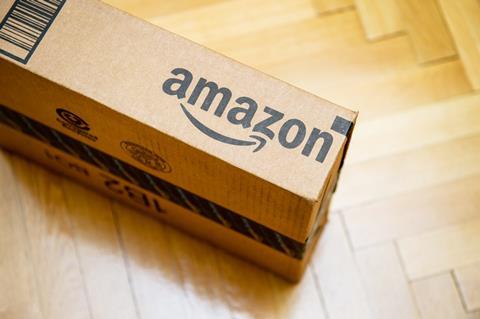
Fulfilled by Merchant (FBM): The seller distributes products from their own warehouse or facilities. This option carries no fulfilment cost, and just a professional plan fee. On the plus side, the seller has complete control over pricing and margins. However, it is harder work to get the Prime badge – the seller has to prove its reliability on deliveries.
Fulfilled by Amazon (FBA): The seller distributes stock to Amazon’s fulfilment centres, where items are stored and readied for dispatch. This option includes a professional plan fee as well as a fulfilment fee, which includes picking, packaging and storage, charged per unit based on size and weight. Benefits include automatic Prime status and access to the European Fulfilment Network, which enables easier selling across Europe.
Vendor: Sellers are only able to become vendors if Amazon invites them to do so. Under this option, Amazon buys stock from the business like any other retailer would. It is therefore free to choose the listing price. The fees for being a vendor are a term of negotiation that vendors need to agree with Amazon and are fixed for 12 months. This will vary depending on the product category. Vendors are also able to take advantage of the same-day Prime offering in some areas.
Expert help
It’s a complex landscape – which has led many brands to hire experts to help them navigate the system. “Amazon is never straightforward. The way in which you need to operate with them is very much their way or no way,” says Jack Scott, co-founder at Dash Water, which has been on Amazon since its debut in 2017.
“Because of the intricacies, it’s been very effective for us to work with experts to help with either set-up or spending money and helping with deliveries and purchase orders, etc,” he adds.
Camilla Ainsworth, a finalist on BBC’s The Apprentice and founder of nut milk startup Mylk Plus, also sought out external help when launching on Amazon this year. “From the start it was very complicated, there were a lot of hoops that we had to jump through,” she says.
Mylk Plus decided to partner with a fulfilment company to help set up the listing and distribute its products to customers. This option, Ainsworth says, decreased the shipping cost for next-day delivery on its “huge volume” of products going through the channel.
Ainsworth deliberately chose a specific Amazon courier for this task because she wanted to offer Prime delivery. “You only want to be on Amazon if you’re going to offer Prime, people are so impatient now,” she explains.
For sellers such as Mylk Plus, which took the FBM route, a Prime listing isn’t a given. They have to prove to Amazon they have a track record of distributing their product within the right timeframe on 99% of occasions. For FBA sellers and Vendors the Prime badge is included in their packages.
However you choose to do it, Amazon’s own figures underline the importance of speed. It puts the number of Prime members at 150 million worldwide. And that is only set to increase, as the coronavirus pandemic has encouraged Amazon to focus its next-day delivery service on ‘essential’ items including household goods, food and drink.
Plus, Prime offers another crucial benefit: visibility. Without a Prime badge, you have less chance of being seen, says Tambo’s Adams. He explains that visibility on the site depends on Amazon’s product search engine algorithm. It works off relevance, stock availability, sales, quality of reviews and pricing, though the one you “really need to take care of” is stock, he says.
“If you run out of stock, it has a short-term impact, but because the algorithm remembers, it has a long-term impact as well,” Adams reveals. “Amazon always wants to make the sale and it can’t do that if you haven’t got the stock.”
Visibility
On a crowded marketplace such as Amazon, gaining visibility is the only way you stand a chance of doing your desired volumes.
“Success with Amazon isn’t guaranteed, it’s a very competitive marketplace so you have to have a clear strategy for how you get the visibility,” stresses Adams. “That’s really about making sure the way you display your information is fully optimised.”
Optimisation means product detail pages that feature images, video, titles and product descriptions, as well as brand pages that “give you the opportunity to tell the story of your brand. Making sure content is optimised to be picked up by the search engine is very important,” Adams adds.
Promotional activity can also boost visibility, says Merrells of Molzi. Brands can bid for search terms, with the highest bidder securing the top spot for a specific key word – though Merrells stresses it is important to get the basics right first. For the savvy seller, the rewards can be plentiful.
“Amazon is a real breeding ground for new brands – a lot of them build their reputation through Amazon and use that as the leader to get into other retail distribution,” says Adams.
“Making sure content is optimised to be picked up by the search engine is very important”
One prime example of this strategy is protein snacking brand The Curators. “It’s so nice not to have to go to a retailer and convince them to take the leap,” says founder Max Rees. And for Dash Water, while it has been on Amazon since its outset, “the opportunity to get in front of new customers”, says Scott, has been invaluable as sales from the foodservice side dried up.
The figures from recent Amazon converts show just how large that opportunity can be. Snack brand Olly’s has seen online grow from 2%-3% of its turnover to 30% since the pandemic prompted it to seek out an Amazon listing. Livia’s has seen a 400% increase in sales on Amazon since going live during lockdown.
These brands now see Amazon as part of their long-term strategy. Livia’s founder and CEO Olivia Wollenberg says it will become “one of our major sales platforms over the next six months”, while Olly’s has already added new listings to the site.
It suggests that, for these brands, skyrocketing volumes have made the costs of Amazon worthwhile. Molzi’s Merrells says that, “managed correctly”, selling on the site is definitely worth the associated costs. “It can be easy to let costs get out of control, wiping out the effort put in,” he says.
“But if the business prepares thoroughly in advance and enters the opportunity with eyes open, they should be able to land margins in the same ballpark as with any other retailer.” Some have even achieved margins that are “well in excess of their other sales channels”.
In essence, the key is to be wise to the pros and cons of Amazon. Sellers can’t expect an overnight success without the right strategy in place. Companies must weigh up the different options, and carefully consider whether the costs will overshadow the revenue.
Get that right, and the rewards could be huge. Because for all the controversy over Amazon’s plans to pass on the digital sales tax, as these companies prove, the Amazon dream is still a compelling one.
Five startup success stories on Amazon
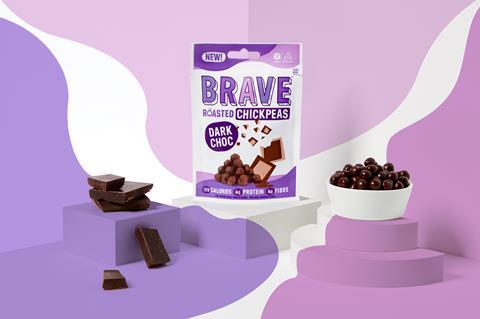
Brave Foods
When venturing on to Amazon in early 2018, Brave Foods “definitely underestimated the opportunity”. It had a promising first year with its flavoured pea snacks, and is now consistently ranked within the top 40 bestselling snacks on the platform. Co-founders Amber Fraser and Seb Sokol say the “massive reach” of Amazon is a huge plus. Plus, it uses FBA, which “makes fulfilment very easy as everything operationally is handled by Amazon”.
They say sales are growing at an average of 30%-40% per quarter, and doubled from February to March.
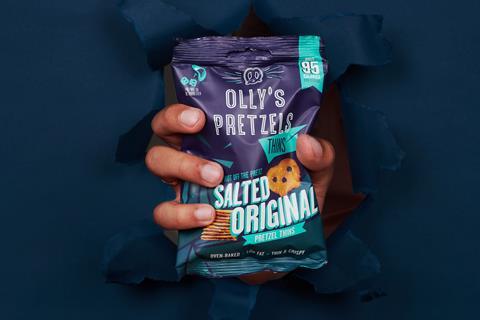
Olly’s
Snack brand Olly’s, experienced huge success on Amazon over lockdown, when it listed excess hospitality stock.
“As soon as coronavirus hit, we lost a lot of business with on-trade, travel, hospitality etc, but it was basically a blessing in disguise,” says founder Olly Hiscocks. “The products we didn’t have in a retail format, we put on Amazon – and they went absolutely mental.
“The uptake we’ve seen on the bulk nuts and olives has been phenomenal. Online has become around 30% of our business and before it was about 2%-3%.”
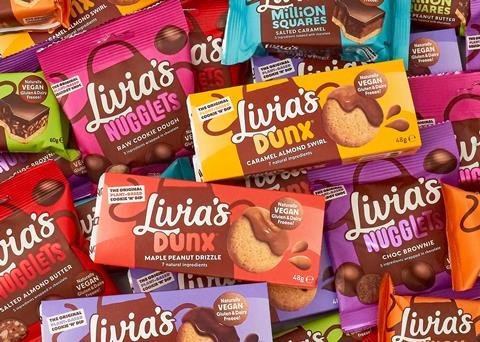
Livia’s
Vegan and gluten-free snacking brand Livia’s began selling on Amazon during lockdown and reports 400% growth since launch.
That success has inspired the brand to plan the launch of more products and ranges on the platform in the next few weeks.
Founder Olivia Wollenberg wanted to make the treats “as accessible as they could be” to customers. “With Amazon, if you do a good job, it is easy for people to discover you,” she says. “It’s brilliant for increasing brand awareness and finding new customers.”
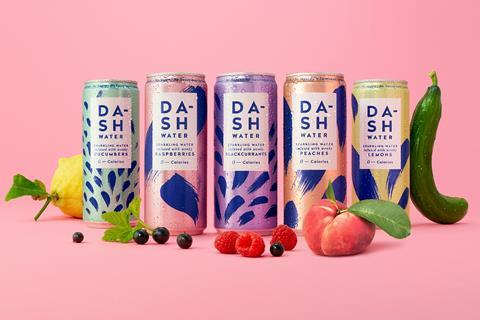
Dash Water
Dash Water set up on Amazon at its outset in 2017, and has recently transitioned from FBA to being a vendor. During lockdown, it experienced a 170% increase in sales, which it attributes largely to the rise in online shopping.
Co-founder Jack Scott says Dash drinks are often purchased online due to their weight.
“It’s a key channel for us and Amazon gets more eyes on the brand,” he says. For him, visibility comes from Amazon’s “powerful search engine” and “being able to do sponsored ads to target people who might like your product”.
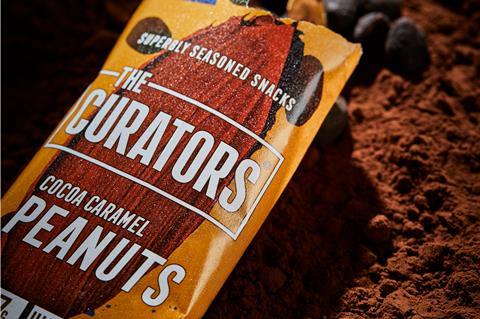
The Curators
Sales of The Curators high-protein snacks – which include jerky and nuts – have boomed on Amazon. Online now accounts for 50% of the brand’s sales, compared to 10% before lockdown.
Founder Max Rees says the brand appeals to shoppers wanting to buy in bulk. “We’ve always known that slightly higher-value premium snacks do well on Amazon because they’re at a higher price point than, for example, a packet of crisps. So, if people can purchase a case of 12 and get a discount, they’re happy to incorporate that into their buying routine.”







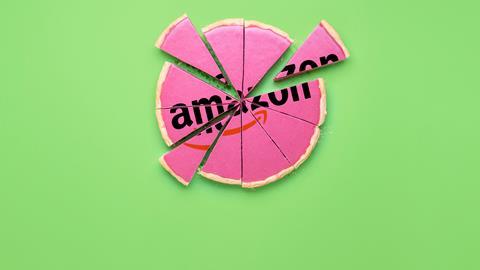












No comments yet